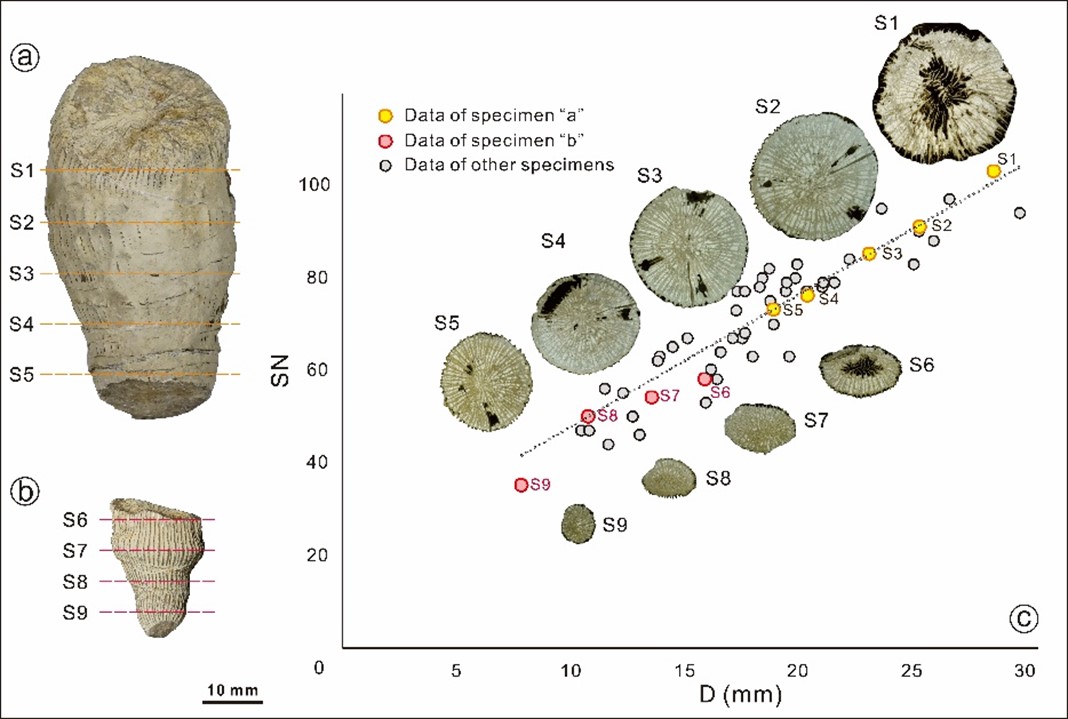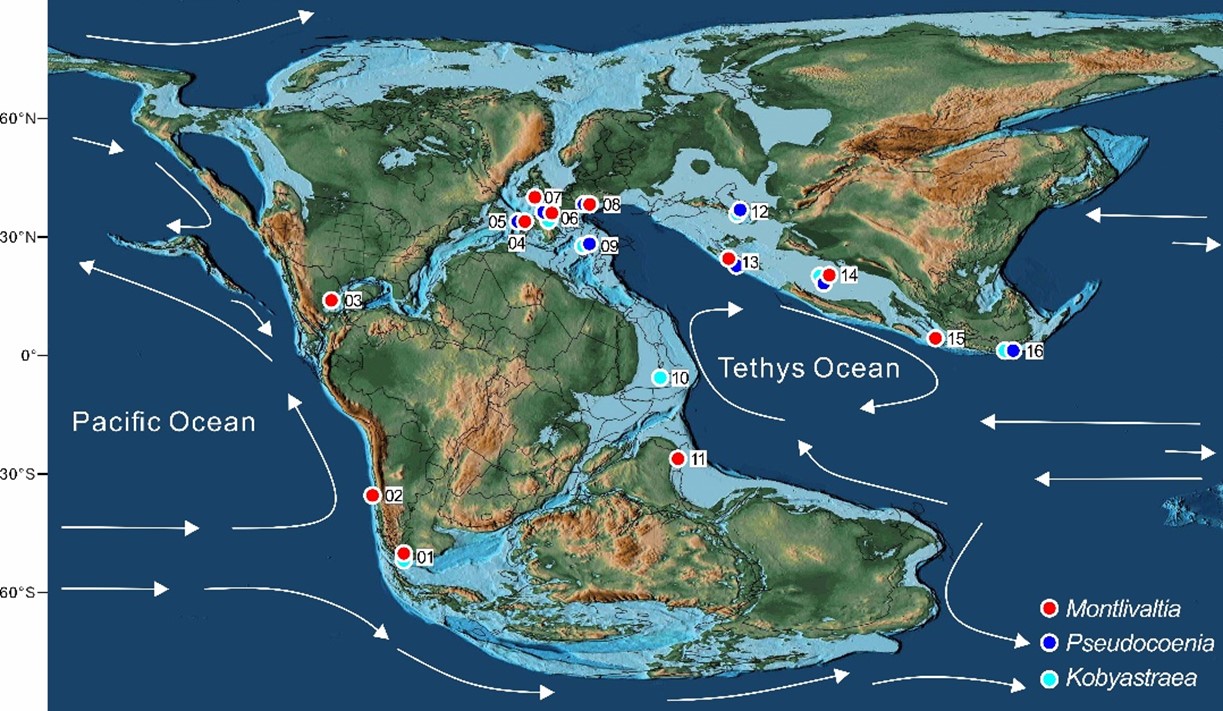Members of the Qinghai-Tibet Scientific Expedition Team from the Nanjing Institute of Geology and Palaeontology, Chinese Academy of Sciences (NIGPAS), have conducted the first systematic and detailed study of Middle Jurassic scleractinian corals in the Qiangtang Block of Tibet. Based on 225 collected coral fossil specimens from the Buqu Formation in the Biluocuo area of northern Tibet, the research team prepared numerous thin sections, including 128 serial slices to observe morphological variations of the species. The results have recently been published in journal Palaeoworld.
The study found that previously reported species in Tibet, such as Montlivaltia xizangensis, M. caryophyllata, M. cornutiformis elliptica, and M. xainzaensis were distinguished based on features (e.g., local thickening of septa, basal thickening) that were actually artifacts caused by diagenetic differences or sectioning orientations. The key diagnostic features of these specimens were consistent with Montlivaltia zangbeiensis. Consequently, the study synonymized these four species into a single taxon: Montlivaltia zangbeiensis. Based on the revised taxonomy, the study clarified the composition of the Middle Jurassic (Bathonian) coral assemblage in the region: the dominant species was the solitary Montlivaltia zangbeiensis, while the branching colonial Pseudocoenia slovenica and the massive colonial Kobyastraea coquandi were relatively rare.
With precise taxonomic identification, the study reveals that the Buqu Formation coral assemblage in the Qiangtang Block exhibits striking similarities to contemporaneous coral communities in East-Central Iran. This discovery indicates the existence of a strong biological connection between the Qiangtang Block and the Central Tethyan domain during the Middle Jurassic. Palaeomagnetic data suggest that both regions were at similar latitudes and situated in open shallow-marine carbonate platform environments, facilitating coral larval dispersal via ocean currents. Although the three coral genera (Montlivaltia, Pseudocoenia, and Kobyastraea) are also recorded in Middle Jurassic strata in Europe, their species-level composition differs significantly from that in Qiangtang. This suggests that the palaeobiogeographic affinity of the Qiangtang Block was closer to the eastern Tethyan domain (East-central Iran) rather than the western domain (Europe).
This research was jointly conducted by ZHU Xiuping, LIANG Kun, and ZHANG Yichun, in collaboration with domestic experts on the Qinghai-Tibet Plateau. The findings not only fill a gap in the study of Middle Jurassic coral biostratigraphy and systematic palaeontology in the Qiangtang block but also provide robust palaeontological evidence supporting the tectonic-palaeogeographic hypothesis that "the Qiangtang block was an integral part of the eastern Tethys Ocean during the Middle Jurassic and maintained close connections with the Iranian block." This work significantly advances our understanding of the multi-block amalgamation history of the Tibetan Plateau and the evolution of the Tethys Ocean.
This study was supported by the National Natural Science Foundation of China and the Second Tibetan Plateau Scientific Expedition and Research Program.
Reference: Zhu, X.-P., Liang, K.*, Liao, W.-H., Yin, J.-R., Rao, X., Zhang, Y.-C. 2025. Scleractinian corals from the Middle Jurassic Buqu Formation, Qiangtang block and their palaeogeographic implications. Palaeoworld. https://doi.org/10.1016/j.palwor.2025.200978.

Serial sections showing morphological variations of Montlivaltia at different growth stages in the Biluocuo area, Qiangtang. D: Diameter; SN: Septa number.

Global palaeobiogeographic distribution of the Jurassic coral genera Montlivaltia, Pseudocoenia, and Kobyastraea, along with inferred oceanic circulation patterns. Locations: 1, Argentina; 2, Chile; 3, Mexico; 4, Morocco; 5, Portugal; 6, France; 7, UK; 8, Germany; 9, Italy; 10, Saudi Arabia; 11, India; 12, Uzbekistan; 13, East-Central Iran; 14, Qiangtang block; 15, Thailand; 16, Indonesia.
Download:
